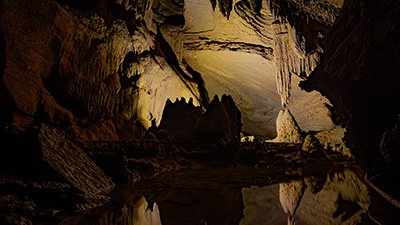
Mountain Mice Murine Equivalent of Tibetan Humans?
PhysOrg: “Mountain Mice Show Adaptation to Altitude” Are mountain mice the murine equivalent of Tibetan humans (see "item )?
At the center of the research is how mice (and other mammals, for that matter) fuel their metabolism.
The results of a study presented at the annual meeting of the Society for Experimental Biology show that mice living in South America’s Andes have “independently evolved a strategy to maximize energy yield when little oxygen is available.” According to researchers, the adaptation enables mice living at high altitudes to use oxygen more efficiently than those living at lower altitudes.
At the center of the research is how mice (and other mammals, for that matter) fuel their metabolism: with fatty acids or with carbohydrates. Generally, the proportion of each used reflects the degree of high-intensity activity (i.e., exercise), with increased carbohydrates burned as activity increases.
A team led by McMaster University biologists Marie-Pierre Schippers and Grant McClelland measured cardiac muscle metabolism and fuel-burning patterns in several species of mice living in either high or low altitudes in the Andes. The team discovered that, relative to low-altitude mice, the high-altitude mice burn an increased proportion of carbohydrates. This likely indicates an oxygen-saving advantage, as burning carbohydrates produces fifteen to eighteen percent more energy (per unit of oxygen) than burning fatty acids does.
Although the scientists claim the high-altitude mice have “independently evolved” this preference for carbohydrates, the inferred change can be understood simply as an act of natural selection. Given an initial population of mice with variation in fuel source preference, and taking the researchers conclusion (that carbohydrate-burning is more efficient with respect to oxygen consumption), then it makes sense that only mice that burn increased carbohydrates may survive if transplanted to high altitudes. Once again, we see that a harsher environment has led to decreased diversity: survival of the fittest has eliminated (or reduced) diversity among the high-altitude population—the opposite of what molecules-to-man evolution is predicated upon.
For more information:
Remember, if you see a news story that might merit some attention, let us know about it! (Note: if the story originates from the Associated Press, Fox News, MSNBC, the New York Times, or another major national media outlet, we will most likely have already heard about it.) And thanks to all of our readers who have submitted great news tips to us.
(Please note that links will take you directly to the source. Answers in Genesis is not responsible for content on the websites to which we refer. For more information, please see our Privacy Policy.)
Recommended Resources

Answers in Genesis is an apologetics ministry, dedicated to helping Christians defend their faith and proclaim the good news of Jesus Christ.
- Customer Service 800.778.3390
- © 2024 Answers in Genesis






